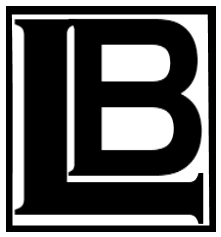At the invitation of the indispensable John Kenyon, I wrote a piece on narrative experimentation for Grift Magazine, the landmark first issue of which has just appeared. Here’s a taste of my contribution:
Sometime in the late 1960s I began to feel uneasy about the whole notion of the novel. I’d been writing them for a decade or so, and my rate of production was such that I must have produced well over 100 of the little rascals. The sheer force of numbers may have had something to do with my discontent, which manifested in a sense that the novel was essentially artificial.
I mean, here’s this voice, in the first or third person, and it’s nattering away at you, and why should you believe it, or pay it any attention? Here’s this book with Edgar Allan Pomander’s name on the cover, and it’s being narrated by a character named Henry David Thornton, and where’d he come from?
It was, to be sure, deceitful. H. D. Thornton was but a figment of E. A. Pomander’s imagination, and the story he passed off as his own was sheer fabrication on Pomander’s part. But let us be clear: it wasn’t the deceit that bothered me, or the artifice.
What troubled me was that it was insufficiently deceptive. In the last days of the Soviet Union, a laborer summed up the way the system functioned: “We pretend to work,” he said, “and they pretend to pay us.” Well, our characters pretended to tell their stories, and our readers pretended to believe them. This voluntary suspension of disbelief is of course the compact between reader and writer upon which all fiction depends, and I was fine with that. But while we were pretending, why not pretend that the book was something more than a novel? Why not let it pretend to be an actual document?
That’s how the novel began. Samuel Richardson’s Pamela, generally considered to be the first English novel, recounts the titular heroine’s story in the form of letters to her sister, and Richardson’s later novels were similarly epistolary in structure. Daniel Defoe’s Robinson Crusoe is a novel in the form of a journal, while A Journal of the Plague Year, which reads like a contemporary journal, is actually a complex historical novel.
But I didn’t go back that far for inspiration. While I was chafing at the whole notion of the novel, I read a couple of books that made me interested in the notion of novel-as-fictional-document. One, Mark Harris’s Wake Up, Stupid!, was epistolary, but in a very different fashion from Pamela, consisting as it did of the letters to and from the protagonist. It was also hysterically funny, with one elaborately set up gag hinging on the missing letter on one character’s typewriter, all resolved in an epistle in which he recounts a tearful meeting with a lover: “And all night long we cried and cried and cried and ucked and ucked and ucked.”
Sue Kaufman’s Diary of a Mad Housewife was, as you might guess, written in the form of a diary. And, while no reader with an IQ in triple digits was in danger of mistaking Harris’s book for actual letters, or Kaufman’s for an actual diary, nevertheless both authors strove to impart a feeling of authenticity to the text.
There’s a good deal more, but that’s enough to give you a taste of it. And there are plenty of other reasons to get your hands on a copy of Grift #1, including fiction by Jack Bates, Ken Bruen, Alec Cizak, Matthew C. Funk, Chris F. Holm, Craig McDonald, Court Merrigan, Thomas Pluck, Keith Rawson and Todd Robinson, interviews with Julie Morrigan and Chris Offutt, and critical essays by Kenyon, Scott Phillips, and Ray Banks. Phillips recalls the darker-than-noir writings of Derek Raymond, and reminded me of my own couple of meetings with that true Bohemian. (His real name was Robin Cook, but the success of an American writer of medical thrillers led the English Robin Cook to use a pen name.) He was at once a wild man and a sweet and gentle spirit, gone too soon, and it’s nice to see him remembered.

That sounds so good, Larry. Thanks for the head’s up.
Good blog, Larry. Interesting thoughts. Hey, it’s all illusion anyway.
Beautiful. There is nothing more pure than the suspension of disbelief.
Thanks for the plug, Larry. Folks who want to read the entire essay can pick up the magazine here: http://tinyurl.com/7ddkwys.
Like to echo John’s thanks. As I’ve said to Kenyon, Bruen, and the others, should we ever cross paths, the beers are on me.